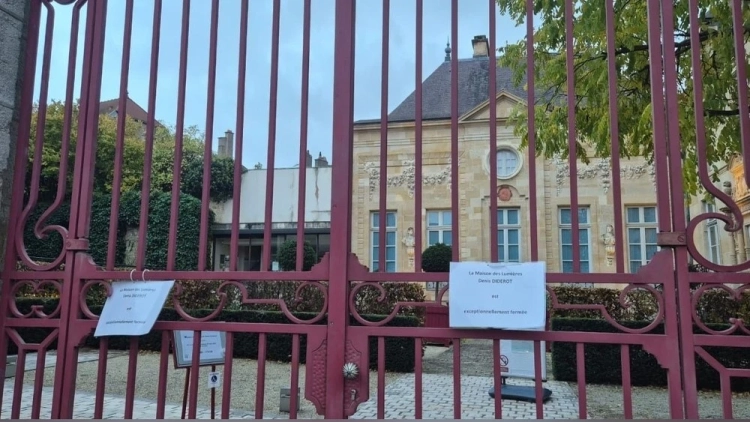According to data from the National Statistical Committee, from January to September of this year,...

On May 24, from 18:00 to 00:30, the State National Russian Drama Theatre named after Ch. Aitmatov...
- Currently, the first layer of asphalt is being laid on the right side of the road section from...

Looking at these structures, Canadian photographer Christopher Herwig realized how incorrect...

WINTER January Январь January Issyk-Kul trout completes spawning Wolves begin their mating season...

"Spring will come, but I will not see it" Once, while traveling in distant lands, a...

"Immortal Regiment – Kyrgyzstan" - full readiness for the march on May 9 The first march...

According to the radio station, the incident occurred on the night of October 20. On Monday...

The day before, they held a protest against the decision of the city administration. The protest...

It is very hot and stuffy on the plane, and outside the window, it is deep night. We are flying...

A movie night will take place in Bishkek. According to the organizers, on May 31, visitors to the...

Son-Kul. Fishermen having lunch in their yurt Christoph Rehage is a German traveler, writer, and...

Recently, my father gave me a ride from Karakol to Bishkek. On the way back, he decided to stop by...

IN MEMORY OF THE POET-PATRIOT BOKONBAEV In the late 1920s and early 1930s, Upper Street was the...

And so our latest trip to the Carpathians has come to an end. The snowy winter Carpathians are...

April 23 (Thursday), 17:00, Small Hall “THE UNIVERSE OF MOZART'S MUSIC” Lecture-concert by...

STREET OF BISHKEK For each of us, our homeland begins with dear places - with the house where we...

Guest House "Boomerang" on Issyk-Kul The resort town of Cholpon-Ata is located on the...

One Hundred Springs Once, an old aksakal was asked how many years he had lived on earth. - I have...

How much is the som backed by gold and currency? Almost every country has gold and foreign...

In ancient times, the functions of a compass and a clock were performed by the Sun, the Moon,...

Amazing Facts About the Time Zones of Our Planet Until the end of the 19th century, the world did...

Opening of Agricultural Fairs from October 6 This weekend, traditional agricultural fairs will...

Children's Health Complex "Zhalyn" The Children's Health Complex...
Osh is the second most populous city in Kyrgyzstan after Bishkek. According to estimates as of...

The symbol and calling card of Cape Town is considered to be Table Mountain. I read somewhere that...

Asphalting of the Tuy-Kegen international highway, which connects Kyrgyzstan with Kazakhstan,...

The Alamedin Waterfall is located in the gorge of the same name, 40 kilometers from the city of...
Overview of prices for stationery and school uniforms. A correspondent took a stroll through the...
Timelapse of the night panorama of Bishkek during the New Year's fireworks...

We arrived in Kuala Lumpur in the evening. The airport is a true metropolis, consisting of an...

The speed of light in a vacuum is 299,792,458 m/s (≈300,000 km/s) We do not see the Sun; we see...

The morning is clear and transparent, filled with freshness, sharply revealing the curves of...

In the Talas region of Kyrgyzstan, new methods for protecting biodiversity are being tested:...

It has been revealed how much forced evacuation of cars will cost in Bishkek It has been revealed...

According to legends and traditions, the planet Venus also influenced the fates of people. One of...

Starting from January 15, 2015, citizens of Kyrgyzstan and foreign nationals with a residence...

Next Saturday, March 21, Bishkek will celebrate Nowruz. The program for the celebration of the...

STREET WITH A GREAT FUTURE Maxim Gorky Street, named after the great proletarian writer, begins in...
Orel i Reshka - Episode 7.15 (Back to the USSR. Bishkek)...

In ancient times, there lived a simple man named Edil. He was so fearful that everyone called him...

The weather was magnificent. The road, like a red arrow, cut through the jungle. It sped towards...
The promotion of cycling has also been taken up in Kyrgyzstan. The passion for bicycles has finally...

Kyrgyz citizens will be able to apply for British visas online on the website of the British...

Radio and Television The city of Osh was radio-equipped in 1931. By 1936, the length of the city’s...

The Mystery of Chon-Tash. In the summer of '91, in the suburbs of the capital of Kyrgyzstan –...
API error: no response...

html History...